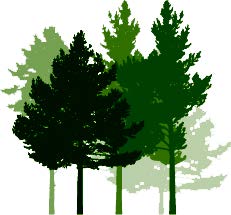Search technical reports
Durability testing of locally grown cypress species
By Dave Page, Charlie Low, Heidi Dungey, March 2011.
Download DSTN-023 (pdf)
Executive summary
This Tech Note summarises all durability testing conducted by Scion over the last fifty years for wood obtained from cypress species. These tests include stake tests and post tests in the ground, weatherboard, lap joint, log and sapwood treatment tests exposed to weather as well as service tests of a number of components in privately owned buildings.
Ground-contact stake tests and above-ground tests completed to date all indicate that the heartwood of Cupressus macrocarpa, C. lusitanica and Chamaecyparis lawsoniana are in natural durability Class 3 (moderately durable). Tests of younger material, including C. leylandii, have been initiated but it is too early to determine whether they will be less durable. Field and service tests in these species show some "early" failures in moderate decay hazard situations indicating variable durability. In some cases timber from some trees failed early, while timber from other trees from the same stand remained sound. In other cases pieces that failed early were from near the pith.
The heartwood of the cypresses is suitable for weatherboards, exterior finishing timbers and joinery but may be less reliable in moderate to high decay exposure situations such as decking and exposed structural components. The heartwood and H1.2 treated sapwood should be a suitable alternative to equivalent grades of H1.2 treated radiata pine.
Overall, durability testing of cypresses here has been reasonably comprehensive in terms of numbers and diversity of tests and the range of environments. On the downside, some of this research has been ad-hoc where pieces of cypress timber were included with tests of preservative treated radiata pine and sample size has been relatively small in many of the tests. These tests were never set up with an experimental design specifically aimed at examining possible causes of variation in durability. Most were add-ons to tests for other purposes such as contracts from timber treatment companies, mainly because the wood was available for testing. Perhaps this shows a gap in knowledge. There is little to be gained by doing more general tests for durability at this stage. However, the installation of designed graveyard tests is recommended once the results from fungal cellar testing for durability are obtained and can point to suitable experimental design with consistent material chosen for the job.

 Specialty Timbers New Zealand
Specialty Timbers New Zealand
No posts yet
Add a post